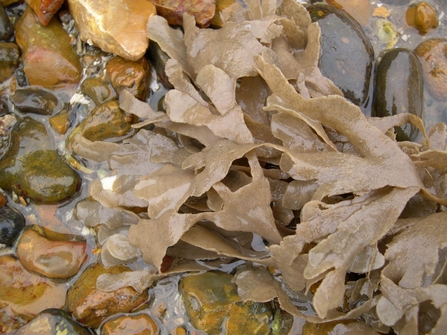Cellaporina decipens is a species of tiny colonial animal known as a bryozoan or sea mat.
It was found growing on a small sample of another bryozoan brought to the surface for microscope identification. The sample was sent off to an expert in the Netherlands for confirmation and is now housed within a collection at the Natural History Museum.
Bryozoans are tiny aquatic invertebrates that form colonies made up of lots of connected ‘boxes’ called zooids. At first glance they can often be mistaken for a rather dull coloured piece of seaweed as several have a branching, or leaf-like appearance, but if you look very closely, you will be able to see the tiny boxes in which the individuals live. Bryozoans are filter feeders, using their tiny, hairy tentacles to waft bacteria and single-celled algae into their mouth; and they in turn are fed on by other marine animals, such as sea slugs.

